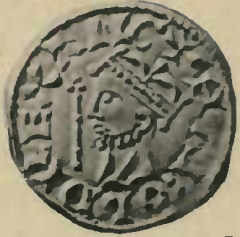Harold Godwinson
Anglo-Saxon King of England (r. 1066) From Wikipedia, the free encyclopedia
Harold Godwinson (c. 1022 – 14 October 1066) ruled England as King Harold II of England after King Edward the Confessor died. Harold ruled from 5 January 1066 until he was killed at the Battle of Hastings. His death marked the Norman conquest of England and the end of Anglo-Saxon England.
| Harold Godwinson | |||||
|---|---|---|---|---|---|
| King of England (more...) | |||||
 | |||||
| King of England | |||||
| Reign | 5 January — 14 October 1066 | ||||
| Coronation | 6 January 1066 | ||||
| Predecessor | Edward the Confessor | ||||
| Successor | Edgar the Ætheling or William the Conqueror | ||||
| Born | Circa 1022 Wessex, England | ||||
| Died | 14 October 1066 (aged about 44) Battle of Hastings, Sussex | ||||
| Burial | Waltham Abbey, Essex, or Bosham (disputed) | ||||
| Spouse | Edith Swanneck Edith of Mercia | ||||
| |||||
| House | House of Godwin | ||||
| Father | Godwin, Earl of Wessex | ||||
| Mother | Gytha Thorkelsdóttir | ||||

Career
Harold was the son of Godwin, Earl of Wessex, and Gytha, a Danish noblewoman.[1] His sister, Edith, was married to the king he succeeded, Edward the Confessor.[2] About that same time, Harold became the Earl of East Anglia.[3] When his father died in 1053, Harold inherited his earldom of Wessex.[3]
Elfgar, the son of Leofric of Mercia, was appointed to replace Harold in East Anglia. Berkshire and Somerset were joined to Wessex again.[3] Wessex itself was then an enormous amount of land that covered about a third of England. Harold ruled over a large portion of England, making him the most powerful man in the whole kingdom after the king.
Harold had three brothers: Tostig,[4] Swegen[5] and Gryth.[6] He claimed to have been made King by Edward the Confessor. Before Harold became king, he swore to help William, Duke of Normandy to become king.[7]
In September 1066, Harold defeated an invasion from the north by Harald Hardrada of Norway.[6] Harold returned south to fight William's invasion[7] but was killed, it is generally assumed, by an arrow shot by one of William's archers. However, some reports stated that he was cut down by many soldiers.[8]
References
Wikiwand - on
Seamless Wikipedia browsing. On steroids.
